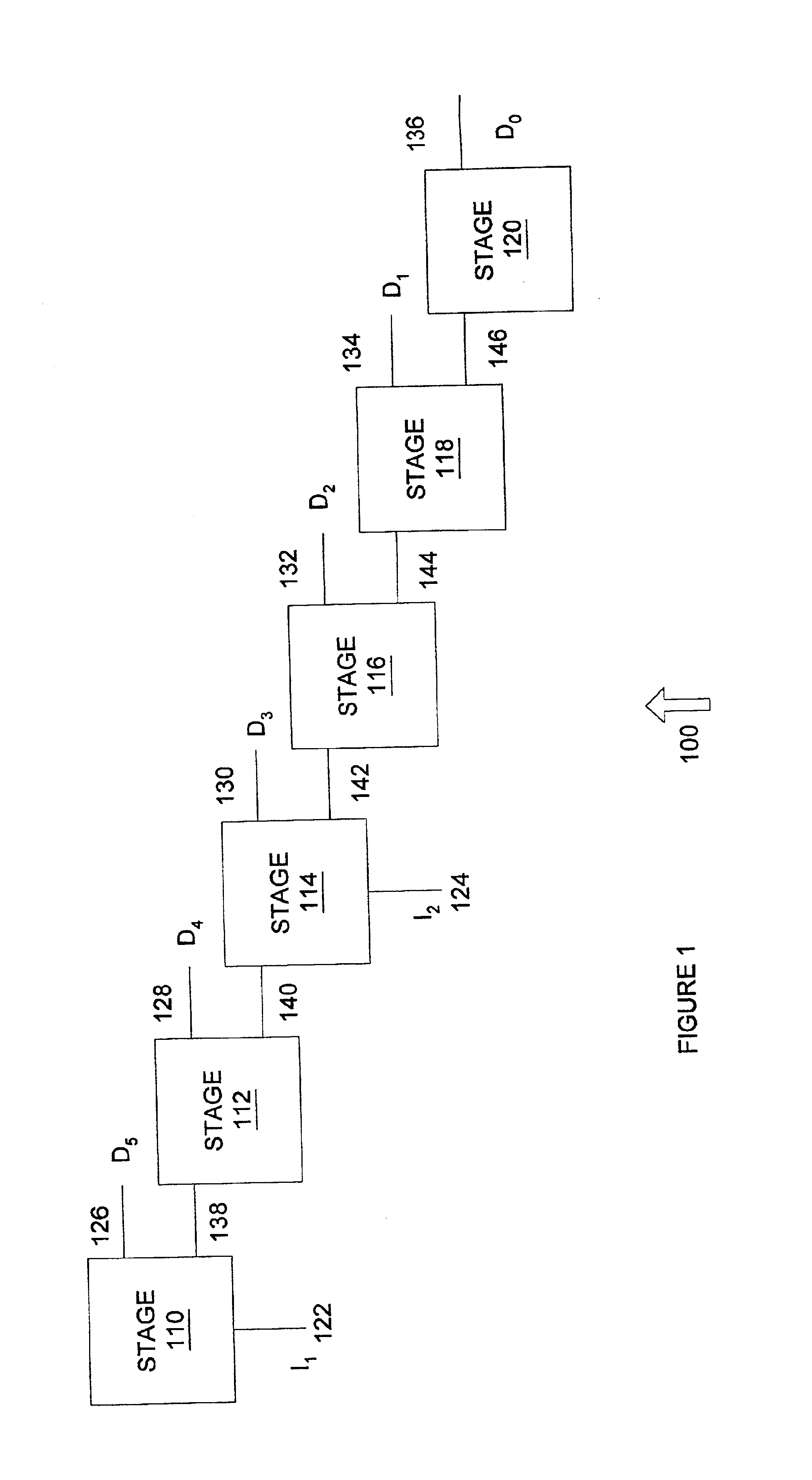Pipelined analog to digital converter
a converter and analog-to-digital converter technology, applied in the field of cellular communications, can solve the problems of multi-rate circuitry typically comprising redundant dual, cellular handsets not interchangeable, and multi-rate phones suffering from various drawbacks, so as to achieve convenient adjustment and optimize power usage
- Summary
- Abstract
- Description
- Claims
- Application Information
AI Technical Summary
Benefits of technology
Problems solved by technology
Method used
Image
Examples
Embodiment Construction
[0013]In the description which follows, like parts are marked throughout the specification and drawing with the same reference numerals, respectively. The drawing figures may not be to scale and certain components may be shown in generalized or schematic form and identified by commercial designations in the interest of clarity and conciseness.
[0014]FIG. 1 is a diagram of an analog to digital converter 100 in accordance with an exemplary embodiment of the present invention. Analog to digital converter 100 may be used to provide an adjustable sampling frequency and sample bit size in accordance with known standards for wireless communications.
[0015]Analog to digital converter 100 includes six cells 110, 112, 114, 116, 118 and 120. Each cell 110 through 120 is operable to receive an incoming voltage value and to output a logical zero or one depending upon the magnitude of the voltage applied at the input to the cell 110 through 120. For example, for a 6-cell analog to digital converter...
PUM
 Login to View More
Login to View More Abstract
Description
Claims
Application Information
 Login to View More
Login to View More - R&D
- Intellectual Property
- Life Sciences
- Materials
- Tech Scout
- Unparalleled Data Quality
- Higher Quality Content
- 60% Fewer Hallucinations
Browse by: Latest US Patents, China's latest patents, Technical Efficacy Thesaurus, Application Domain, Technology Topic, Popular Technical Reports.
© 2025 PatSnap. All rights reserved.Legal|Privacy policy|Modern Slavery Act Transparency Statement|Sitemap|About US| Contact US: help@patsnap.com



